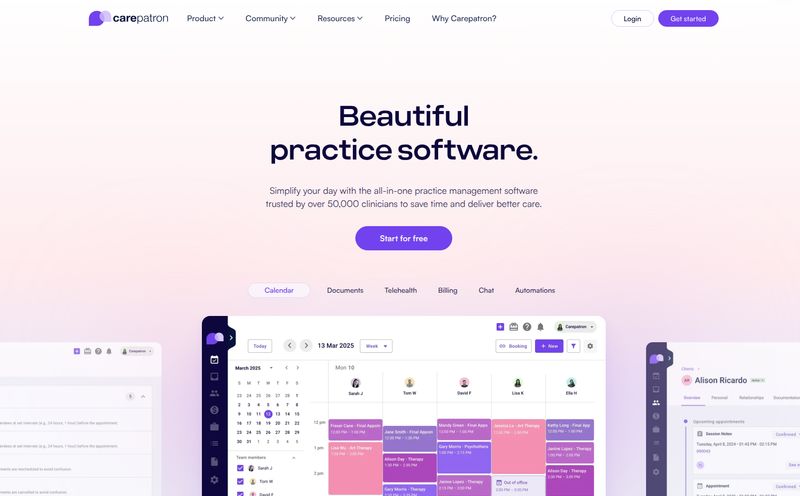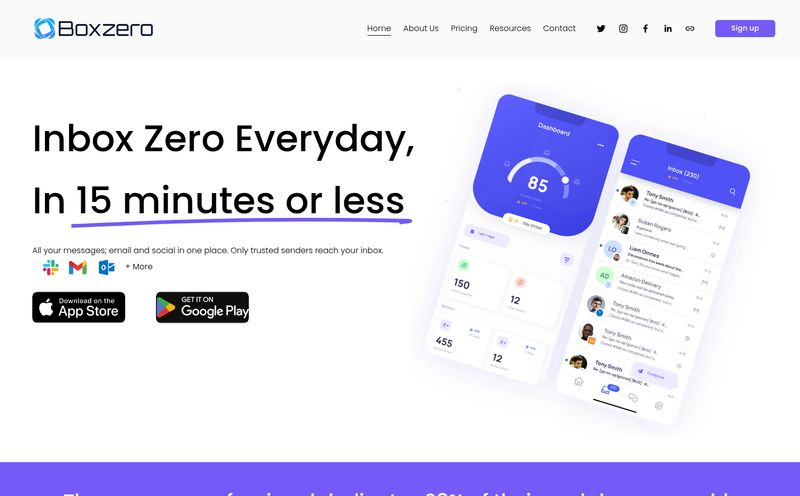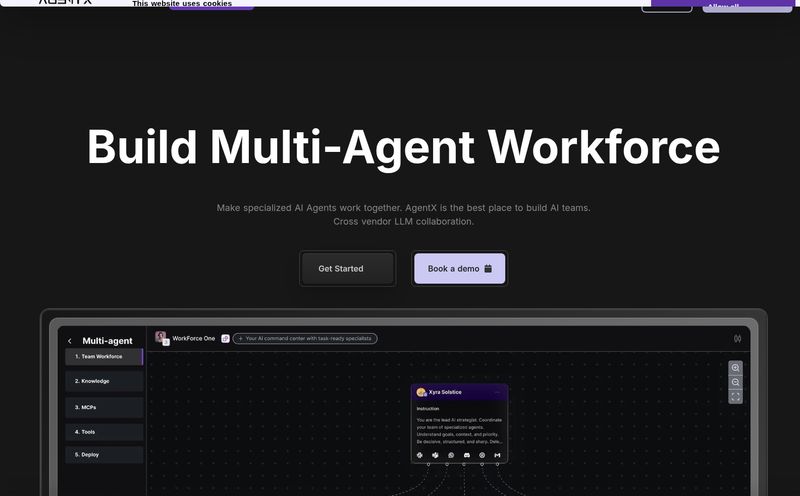If you work in any Go-To-Market (GTM) role—sales, marketing, customer success—your browser tab bar probably looks like a chaotic city skyline. Salesforce over here, HubSpot there, a mountain of Google Sheets, a Slack channel that never sleeps, and maybe Jira or Asana for good measure. Sound familiar? It’s a constant, dizzying shuffle. It's like trying to cook a gourmet meal with your ingredients scattered across a dozen different kitchens. You spend half your time just finding things instead of actually doing things.
For years, we've been told the solution is more integration, another dashboard, one more app to rule them all. But it usually just adds another building to the skyline. So when I heard about a tool called Jigso, which calls itself an "augmented system of record," my curiosity was piqued. Not just another dashboard, but a brain that connects to all the tools you already use? A bold claim.
As someone who lives and breathes SEO, CPC, and traffic generation, my world is governed by data. Data from Google Analytics, from SEMrush, from our CRM, from our ad platforms. The idea of something that could intelligently connect those dots without me having to manually export six CSVs and frankenstein them together in a spreadsheet… well, that’s compelling. So I decided to take a closer look.
So What Exactly is Jigso, Anyway?
Let's cut through the marketing jargon. Jigso isn’t trying to replace your Salesforce or your Slack. Thank goodness. Instead, it acts like a central nervous system for your existing tech stack. It plugs into all those different apps and data sources and uses AI to help you research, monitor, and report on... well, anything.
Think of it this way: Your CRM is your system of record for customer data. Your project management tool is your system of record for tasks. Jigso aims to be the system of record for knowledge. It provides context. It connects a customer ticket in Zendesk to a deal status in Salesforce and a recent conversation about them in Slack. For a GTM team, that kind of connected knowledge is pure gold.

Visit Jigso
It's built specifically for the chaos GTM teams endure. It’s designed to give you that 360-degree view of a customer, a project, or a campaign without the manual labor. Data independence is a phrase they use, and it resonates. It’s about empowering the person who needs the answer to get it themselves, right now.
The Core Features That Actually Matter
A feature list is just a list. What matters is what it allows you to do. After digging in, a few things really stand out as genuinely useful, not just shiny objects.
A True 360° View (Or So They Claim)
This is the big one: 360° AI-powered research & analysis. We've all been sold this dream before. But Jigso’s approach feels different. Imagine a new, high-value lead comes in. The old way? You'd open your CRM, check past interactions. Open your marketing automation tool, see what emails they've opened. Search Slack to see if anyone's mentioned them. Search Google Drive for any related docs. It's a 20-minute scavenger hunt.
Jigso's promise is to consolidate that hunt into a single query. You ask about the lead, and it pulls the relevant pieces from all connected systems. It's not just data aggregation; it’s AI-driven synthesis. It tells you the story of that lead, not just the data points. That's a massive time-saver and a huge competitive advantage.
The All-Seeing Eye Across Your Apps
I love the idea of "monitoring across apps" and setting up custom alerts. As an SEO, I have alerts for brand mentions, keyword rank drops, and technical site issues. Jigso takes this concept and applies it to the entire business pipeline. You could set an alert for:
- When a deal over $50k hasn't been updated in 7 days.
- When a high-value customer's usage drops by 20%.
- When a negative sentiment keyword pops up in a support ticket.
It's like having a dedicated analyst who never sleeps, tapping you on the shoulder only when something really needs your attention. This moves teams from being reactive to proactive, which is the holy grail of operational efficiency.
No More "I'll Get to It Later" with Action Item Detection
This feature is deceptively simple but brilliant. How many times has a genuine action item died a lonely death in a forgotten Slack thread? Someone says, "I'll follow up with them next week," and it evaporates into the digital ether. Jigso's AI is designed to parse these conversations and flag them as actual tasks. It catches those casual commitments and ensures they don't slip through teh cracks. For managers, this is a game-changer for accountability and execution.
My Honest Take: The Good, The Bad, and The GTM-Ugly
Alright, no tool is perfect. Let's talk about where Jigso shines and where you might hit a few bumps. I’ve always believed in transparent reviews, so here's my take, no sugar-coating.
"The biggest win for me is the potential for time reclamation. Time is the one resource we can't buy more of, and GTM teams hemorrhage it on manual, repetitive tasks. This is where a tool like Jigso could genuinely change the math."
The time savings is the obvious benefit. It directly translates to more time selling, marketing, or supporting customers. And the idea of giving my team data independence? Fantastic. I don't want my content strategists to have to wait 48 hours for an analyst to pull a simple report. I want them to be able to ask, "Which blog topics drove the most MQLs last quarter?" and get an answer. That's powerful.
But let's not get carried away. This isn't a magic wand. The biggest hurdle, and it’s a big one, is that Jigso's effectiveness is entirely dependent on the quality of your existing data. It's the classic GIGO principle: Garbage In, Garbage Out. If your Salesforce is a mess of duplicate contacts and incomplete fields, Jigso won't fix it. It will, however, shine a very bright, very powerful spotlight on that mess. So, step one might be a data cleanup project.
There's also the initial setup and potential learning curve. Connecting all those apps and teaching the AI what's important in your business will take some upfront effort. This isn’t a plug-and-play Chrome extension; it's a foundational piece of your tech stack, and you have to treat it as such.
The Million-Dollar Question: What's the Jigso Pricing?
Ah, the question on everyone's mind. I scoured their site, and you'll notice a distinct lack of a "Pricing" page. This is typical for enterprise-grade SaaS. There's no tiered pricing like 'Basic, Pro, Business' for $29/month.
This means you're looking at a "Contact us for a demo" situation. The price will likely be customized based on the size of your team, the number of integrations you need, and your specific use cases. Don't take this as a red flag; it's standard practice for tools this complex. It’s not for a solo blogger or a 3-person startup. It's for established teams who can justify the investment with a clear ROI calculation based on time saved and revenue gained.
So, Who is This Really For?
After all this, who should be booking a demo with Jigso? In my opinion, it's a perfect fit for:
- Mid-to-large sized companies with distinct sales, marketing, and customer success teams.
- Teams drowning in data from a complex tech stack (e.g., Salesforce + Marketo + Slack + Zendesk + Jira).
- Leaders who want to empower their revenue teams to be more self-sufficient and data-driven without needing a PhD in data science.
- Organizations undergoing a shift towards RevOps or a more unified GTM strategy.
If you're a small business where the founder is still the lead salesperson, this is probably overkill. But if you have teams dedicated to specific parts of the customer lifecycle, the fragmentation Jigso solves is a very real, very expensive problem.
Final Thoughts
I started this review skeptical, as I am with any tool that promises to solve all our problems. But I'm leaving it cautiously optimistic. Jigso isn't a silver bullet, but it represents a smart evolution in business software. The future isn't about having more apps; it's about making the apps we have work smarter together.
By focusing on augmenting human intelligence rather than replacing it, Jigso is tackling the right problem. It’s trying to clear the fog of data overload so your team can focus on what they were hired to do. It demands good data hygiene and an initial investment of time, but for the right organization, the payoff could be transformative. It might just be the puzzle piece—pun intended—that your GTM strategy has been missing.
Frequently Asked Questions about Jigso
- What is Jigso in simple terms?
- Think of it as a smart assistant for your business. It connects to all your work apps (like your CRM, email, and Slack) and uses AI to find information, monitor important activities, and give you a complete picture of any customer or project without you having to switch between ten different tabs.
- Does Jigso replace my CRM like Salesforce or HubSpot?
- No, absolutely not. Jigso works with your existing tools. It integrates with them to pull information and provide insights. You'll still use your CRM as the primary place to store customer data; Jigso just makes that data more accessible and contextual.
- Is Jigso difficult to set up?
- There is an initial setup process to connect your applications and configure what you want to monitor. Like any powerful tool, it requires some upfront effort to get the most out of it. It's not a simple one-click install, but a strategic implementation.
- I can't find Jigso's pricing, is it free?
- Jigso is not free. The lack of a public pricing page indicates it's an enterprise solution with custom pricing. You'll need to contact their sales team for a demo and a quote based on your company's specific needs.
- What kind of teams benefit most from Jigso?
- Go-To-Market (GTM) teams—including sales, marketing, revenue operations (RevOps), and customer success—are the primary audience. Any team that relies on information from multiple systems to do their job effectively will see significant benefits.
- How does the AI in Jigso actually work?
- In essence, the AI reads and understands unstructured data (like conversations in Slack) and structured data (like fields in your CRM). It then creates connections between them to answer questions, identify action items that were mentioned in passing, and monitor for patterns you've told it to watch for.
Reference and Sources
- Jigso Official Website
- What is a System of Record (SoR)? - TechTarget
- Gartner Insights on B2B Go-to-Market Strategy



